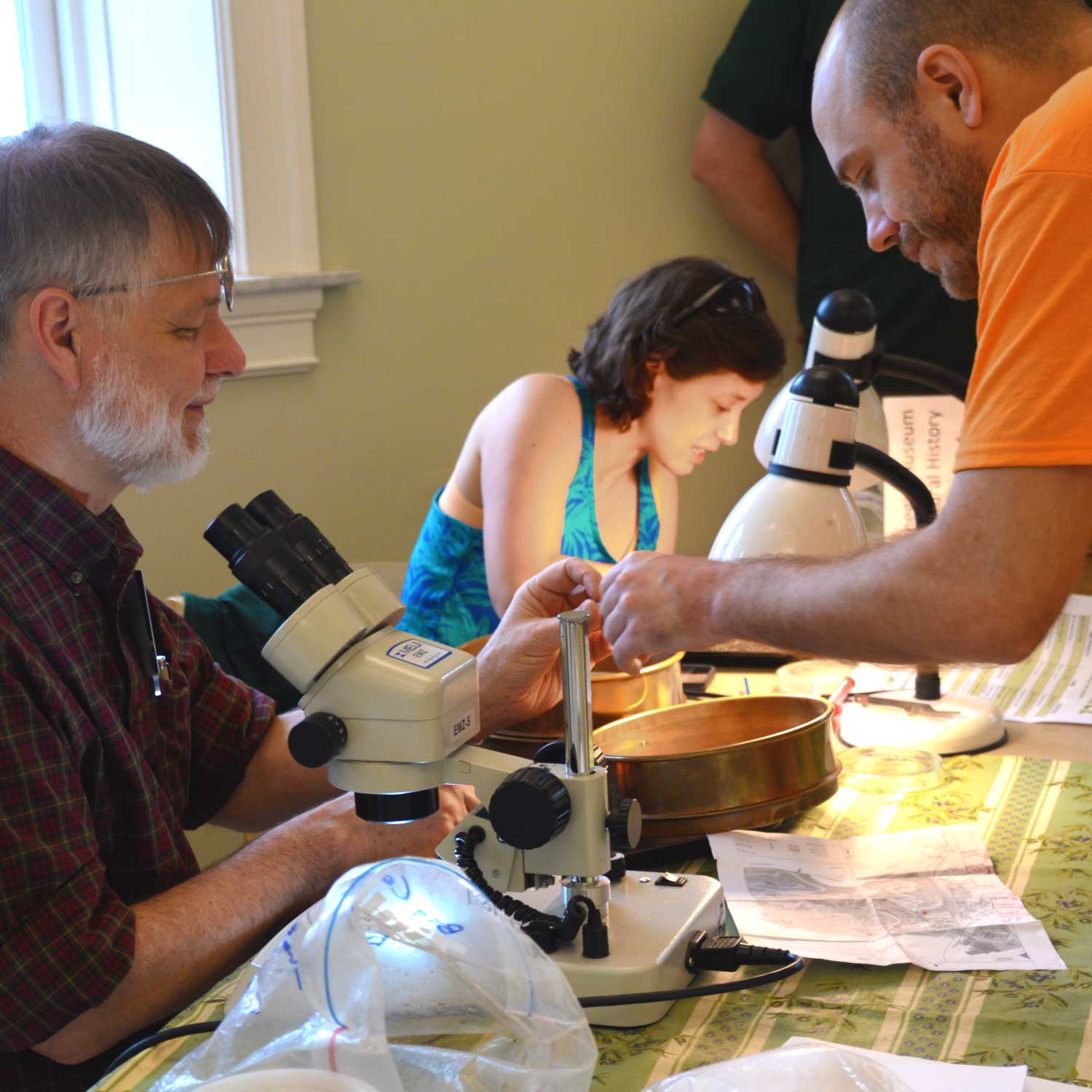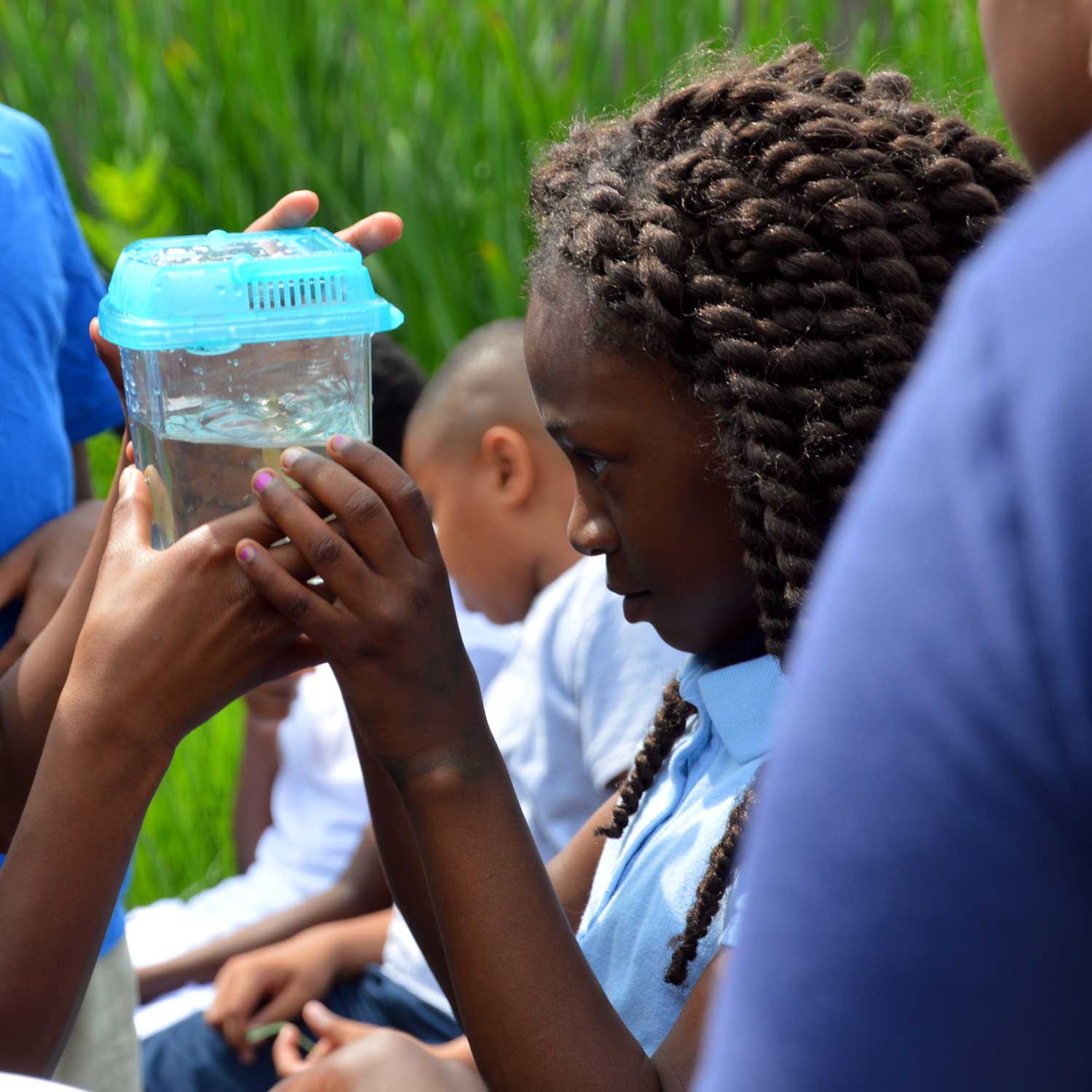Blog

#bioPGH Blog: Bioblitz Results
 A resource of Biophilia: Pittsburgh, #bioPGH is a weekly blog and social media series that aims to encourage both children and adults to reconnect with nature and enjoy what each of our distinctive seasons has to offer. From the best times to plant seasonal flora and enjoy their peak blooms, to astronomical events and creatures to keep an eye and ear out for, Phipps will keep you in the know with what’s going on in our environment!
A resource of Biophilia: Pittsburgh, #bioPGH is a weekly blog and social media series that aims to encourage both children and adults to reconnect with nature and enjoy what each of our distinctive seasons has to offer. From the best times to plant seasonal flora and enjoy their peak blooms, to astronomical events and creatures to keep an eye and ear out for, Phipps will keep you in the know with what’s going on in our environment!
Sun., June 5, Phipps hosted its first BioBlitz event in Schenley Park of Oakland. Despite a bit of early morning rain, volunteer scientists, naturalists, community members and artists from organizations across Pittsburgh came together to survey the park for as many living organisms as possible. In just nine hours, BioBlitz participants had identified a total of 207 species of insects, animals, fish, plants and fungi in areas surrounding Panther Hollow Lake and along Phipps Run and Panther Hollow Run. The species identified included 93 plants and trees, 35 birds, 35 fungi and slime molds, 13 snails, five lichens, four amphibians, two mammals, two fish, two spiders, two bees, two wasps, two mites, two mosses, one butterfly, one mantis, one fly, one millipede, one centipede, one spittlebug, one pseudoscorpion, and one weevil. A complete list of species identified during the BioBlitz can be found below. While this is but a sampling of the 1,408 species identified during the very first BioBlitz to take place in the 456-acre park back in June 2001, it is still an impressive snapshot of the variety of life that resides in the niche of Schenley Park that is Panther Hollow.

Species of Schenley Park and Panther Hollow
Plants and Trees
American Beech (Fagus grandifolia)
American Sycamore (Platanus occidentalis)
Ash (Fraxinus sp.)
Asiatic Dayflower (Commelina communis)
Bedstraw (Galium aparine)
Big Leaf Linden (Tilia platyphyllos)
Black Cherry (Prunus serotina)
Black Locust (Robinia pseudoacacia)
Black Snake Root (Sanicula canadensis)
Bladdernut (Staphylea trifolia L.)
Box Elder (Acer negundo)
Buckeye (Aesculus)
Buckhorn Plantain (Plantago lanceolata)
Buckthorn (Rhamnus cathartica)
Burdock (Arctium lappa)
Canada Violet (Viola canadensis)
Cattails (Typha)
Celandine Poppy (Stylophorum diphyllum)
Chickweed (Stellaria media)
Clearweed (Pilea pumila)
Cleavers (Galium spp.)
Colts Food (Tussilago farfara)
Common Black Snakeroot (Sanicula odorata)
Common Blue Violet (Viola sororia)
Common Duckweed (Lemna minor)
Cottonwood (Populus deltoides)
Creeping Buttercup (Ranunculus repens)
Creeping Cinquefoil (Potentilla reptans)
Dandelion (Taraxacum off.)
Ditch Stonecrop (Penthorum sedoides)
Docks (Rumex sp.)
Dogwood (Cornus sp.)
Downy Brome (Bromus tectorum)
Eastern Hemlock (Tsuga canadensis)
Elderberry (Sambucus)
Elm (Ulmus sp.)
Field Penny Cress (Thlaspi arvense)
Fleabane (Erigeron strigosus)
Foam Flower (Tiarella cordifolia)
Garlic Mustard (Alliaria petiolata)
Gill Over the Ground (Glechoma hederacea)
Golden Alexanders (Zizia aurea)
Goutweed (Aegopodium podagraria)
Greater Celandine (Chelidonium majus)
Hackberry (Celtis sp.)
Hawthorn (Grataegus sp.)
Honeysuckle (Lonicera sp.)
Honeywort (Cerinthe major)
Japanese Knotweed (Fallopia japonica)
Jewelweed (Impatiens pallida)
Magnolia (Magnolia sp.)
May Apple (Podophyllum peltatum)
Mock Orange (Philadelphus lewisii)
Motherwort (Leonurus cardiac)
Mugwort (Artemisia vulgaris L.)
Mullein (Verbascum thapsus)
Northern Hackberry (Celtis occidentalis)
Northern Red Oak (Quercus rubra)
Philadelphia Fleabane (Erigeron philadelphicus)
Plantain (Plantago spp.)
Poison Ivy (Toxicodendron radicans)
Poke Root (Phytolacca americana)
Pokeweed (Phytolacca americana)
Princess Tree (Paulownia tomentosa)
Red Clover (Trifolium pratense)
Red Dead Nettle (Lamium purpureum)
Red Osier Dogwood (Cornus sericea)
Redbud (Cercis canadensis)
Rushes (Juncus sp.)
Sedges (Carex sp.)
Silver Norway (Acer)
Smartweed (Persicaria pensylvanica)
Solomon’s Seal (Polygonatum biflorum)
Sow Thistle (Sonchus sp.)
Spicebush (Lindera benzoin)
Stiltgrass (Microstegium vimineum)
Sweetgum (Liquidambar styraciflua)
Teasel (Dipsacus fullonum)
Tulip Tree (Liriodendron tulipifera)
Virginia Creeper (Parthenocissus quinquefolia)
Virginia Spiderwort (Tradescantia virginiana)
Virgins Bower (Clematis virginiana)
White Clover (Trifolium repens)
White Oak (Quercus alba)
White Snakeroot (Ageratina altissima)
Whitegrass (Leersia virginica)
Willows (Salix sp.)
Witch Hazel (Hamamelis virginiana)
Wood Nettle (Laportea canadensis)
Yarrow (Achillea millefolium)
Yellow Rocketcress (Barbarea vulgaris)
Yellow Salsify (Trapopogon dubius Scop.)
Yellow Wood Sorrell (Oxalis stricta)
Birds
Acadian Flycatcher (Empidonax virescens)
American Goldfinch (Spinus tristis)
American Robin (Turdus migratorius)
Baltimore Oriole (Icterus galbula)
Barn Swallow (Hirundo rustica)
Blue Jay (Cyanocitta cristata)
Brown-Headed Cowbird (Molothrus ater)
Carolina Chickadee (Poecile carolinensis)
Carolina Wren (Thryothorus ludovicianus)
Cedar Waxwing (Bombycilla cedrorum)
Chimney Swift (Chaetura pelagica)
Chipping Sparrow (Spizella passerina)
Common Grackle (Quiscalus quiscula)
Common Starling (Sturnus vulgaris)
Downy Woodpecker (Picoides pubescens)
Eastern Wood-Pewee (Contopus virens)
Gray Catbird (Dumetella carolinensis)
Hairy Woodpecker (Picoides villosus)
Mourning Dove (Zenaida macroura)
Northern Cardinal (Cardinalis cardinalis)
Northern Flicker (Colaptes auratus)
Northern Rough-Winged Swallow (Stelgidopteryx serripennis)
Purple Martin (Progne subis)
Red-Bellied Woodpecker (Melanerpes carolinus)
Red-Eyed Vireo (Vireo olivaceus)
Red-Tailed Hawk (Buteo jamaicensis)
Red-Winged Blackbird (Agelaius phoeniceus)
Rose-Breasted Grosbeak (Pheucticus ludovicianus)
Ruby-Throated Hummingbird (Archilochus colubris)
Scarlet Tanager (Piranga olivacea)
Song Sparrow (Melospiza melodia)
Tufted-Titmouse (Baeolophus bicolor)
White-Breasted Nuthatch (Sitta carolinensis)
Wood Thrush (Hylocichla mustelina)
Yellow-Billed Cuckoo (Coccyzus americanus)
Fungi and Slime Molds
Agarilos sp.
Angel Wings (Pleurocybella porrigens)
Arcyria denudate
Artist’s Conk (Ganoderma applanaturm)
Bear Lentinellus (Lentinellus ursinus)
Bleeding Fairy Helmet (Mycena haematopus)
Boletus eluqsenteron
Ceratiomyxa fruticalosa
Common Fieldcap (Agrocybe pediades)
Corn Silk Inocybe (Inocybe fastigiata)
Dead Man’s Fingers (Xylaria polymorpha)
Deer Shield (Pluteus cervinus)
Diatrype stigma
Dryad’s Saddle (Polyporus squamosus)
Eyelash Cup (Scutellinia scutellata)
Fairy Fingers (Clavaria vermicularis)
False Turkey-Tail (Stereum ostrea)
Gilled Mushroom (Mycena leaiama)
Hairy Bracket (Trametes hirsuta)
Hairy Long Stem Marasmius (Rhizomarasmius pyrrhocephalus)
Hemitrichia calyculata
Honey Fungus (Armillaria atl. Mellea)
Kretzschmaria deusta
Lion’s Mane (Hericium erinaceus)
Mica Cap (Coprinellus micaceus)
Milky Conecap Mushroom (Conoeybe lacteal)
Mower’s Mushroom (Panaeolina foenisecii)
Orange Crust Fungus (Stereum compicatum)
Oyster Mushroom (Pleurotus ostreatus)
Perenniporia Decay (Perenniporia subacida)
Pinwheel Marasmius (Marasmius rotula)
Pleated Inkcap (Parasola plicatilis)
Schizophyllum commune
Stemonitis axifera
Wolf’s Milk (Lycogala epidendrum)
Snails
Bright Glyph Snail (Glyphyalinia wheatleyi)
Globose Dome (Ventridens ligera)
Land Snail (Carychium minimum)
Slippery Moss Snail (Cochilicopa cf. lubrica)
Carved Glyph Snail (Glyphyalinia indentata)
Minute Gem (Hawaiia cf. minuscula)
Black Striate (Striatura ferrea)
Orchid Snail (Zonitoides arboreus)
Costate Vallonia (Vallonia costata)
Variable Vertigo (Vertigo cf. gouldii)
Sculpted Glyph (Glyphyalinia rhoadsi)
Small Spot (Punctum minutissimum)
Ice Thorn (Carychium exile)
Lichens
Common Green Shiled Lichen (Flavoparmelia caperata)
Fluffly Dust Lichen (Lepraria lobificans)
Lemon Lichen (Candelaria concolor)
Rosette Lichen (Physcia sp.)
Shadow Lichen (Phaeophyscia sp.)
Amphibians
Slimy Salamander (Plethodon glutinosus)
Northern Dusky Salamander (Desmognathus fuscus)
Northern Spring Salamander (Gyrinophilus porphyriticus)
American Toad (Anaxyrus americanus)
Mammals
Chipmunk (Tamias)
Rabbit (Leporidae)
Fish
Bluegill (Lepomis macrochirus)
Pumpkin Seed (Lepomis gibbosus)
Spiders
Jumping Spider (Sitticus sp.)
Zebra Jumping Spider (Salticus scenicus)
Bees
Bumble Bee (Bombus)
Honey Bee (Apis)
Wasps
Hymenoptera (Two varieties)
Mites
Acari (Two varieties)
Mosses
Bryum sp.
Pin Cushion Moss (Leucobryum sp.)
Other Species
Cabbage-White Butterfly (Pieris rapae)
Centipede (Chilopoda)
Chinese Mantis (Tenodera sinensis)
Millipede (Diplopoda)
Picture-winged fly (Delphinia picta)
Pseudoscorpion (Pseudoscorpiones)
Spittlebug (Cercopoidea)
Weevil (Curculionoidea)

Connecting to the Outdoors Tip: Taking an “inventory” of all of the species that reside in an area, whether in the form of a citizen science-based BioBlitz or a graduate student’s doctoral research, allows scientists and naturalists the opportunity to get as accurate a view of our environment’s health as possible. By identifying all of the organisms that are present and thriving in any given environment we are able to gain a better understanding of how those ecosystems are functioning. We’re able to address important questions regarding the status of native and non-native, or invasive species, in any given area and make important decisions as to how best conserve and protect those species and their environments. You do not need to survey a 456-acre park to access the pulse of our planet, however. In fact, you can assess the health of our environment right from your own backyard! By using a quadrat, a square frame usually constructed of PVC-pipe, metal rods or even string as a plot, you can assess the density, biomass, cover and frequency of species in any given location. If you happen to find some particularly interesting critters consider observing them a bit more closely by housing them in a mini-ecosystem, which can be easily made by little ones! If you’d prefer to leave nature where you found it consider helping little ones create clay leaf prints or paint with natural items such as leaves, flowers and pinecones!
Continue the Conversation: Share your nature discoveries with our community by posting to Twitter and Instagram with hashtag #bioPGH, and R.S.V.P. to attend our next Biophilia: Pittsburgh meeting.
Additional Resources:
Biodiversity in Your Backyard! | Nuffield Foundation
Introduction to Invasive Species | National Geographic Society
Plot-Based of Quadrat Techniques | University of Idaho
Questions about Quadrats | Science & Plants for Schools
Quadrat Sampling | Census of Marine Life
Build a Mini Ecosystem for Nature Observation with Kids | Stir the Wonder
Clay Leaf Print Tutorial | Jo’s Loft
Painting with Nature | School Time Snippets

